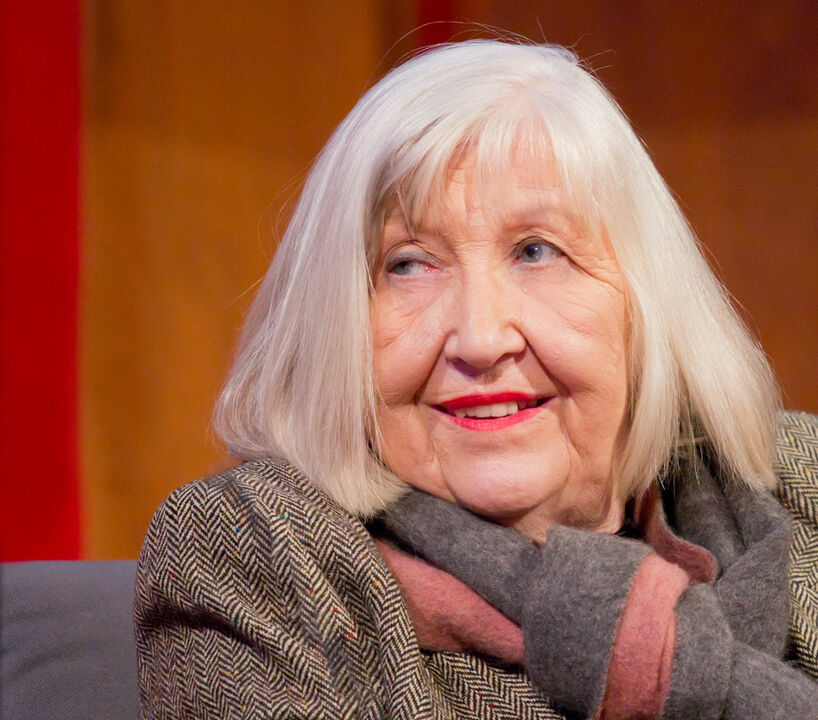Hilla Becher
Siegen. Hilla Becher was born on 02.09.1934 in Potsdam under her maiden name Hilla Wobeser. She began taking photographs as a child at the age of 13 under the creative influence of her mother. Hilla's mother had trained as a photographer at the Lette-Verein in Berlin in the 1920s. She bought her daughter first a disk camera and later a Reflecta and thus certainly contributed to her daughter's later career. In 1951, Hilla was forced to start an apprenticeship because she had been expelled from school for rebellious behaviour and thus could not complete her Abitur. She completed this training in the renowned photo studio of Walter Eichgrün. There she assisted Eichgrün in photographing gardens and castles and thus acquired a feeling for the extensive photographic development of architecture and sculpture. She also developed a special interest in objects with a machine-like character and became enthusiastic about the representation of things in their plasticity through the use of light and shadow. She develops a fundamental understanding of technical forms. She continued to work as an aerial photographer and as a photographer in advertising, but these professions did not fulfil her. In 1958, Hilla Becher was accepted at the Düsseldorf Art Academy. What was special about her admission was that she was the first student to be accepted at the university with a purely photographic portfolio. There she attended courses in commercial art with Bernd Becher, among others. Through these, she was eventually able to open the first photo workshop at the university. In this workshop, she then introduced her fellow students to working in the darkroom. Hilla and Bernd's friendship eventually developed into a partnership and marriage, in which they also worked together on their photographs. At first, they had limited financial means and resources and photographed mainly in the Siegerland region. But after a while, Hilla Becher was finally able to travel with her husband Bernd Becher to the Netherlands, Belgium, France, Luxembourg and England, where they photographed various industrial functional buildings. Hilla Becher compares the resulting photographs to portraits. The aim is to create an honest representation in which nothing is glossed over. In addition, the pictures cannot, of course, capture economic circumstances, but they should show what is typical of the building. Hilla Becher describes the buildings as having their own sound and that the photographs have to be in tune with each other in terms of rhythm and tone. Hilla Becher also describes a fascination for the "silent objects" that can be found especially in industrial areas, far from the ideal of a landscape and tourism. Hilla and Bernd saw themselves as a husband and wife team of artists, they did not distinguish who pressed the shutter release of the picture and there was no clear division of labour. They saw all their works as a product of their joint collaboration. In the 1970s, their works also became known on the international art scene, which opened up the possibility for them to continue their photography in America. In November 1972, Hilla Becher received an appointment as guest lecturer for applied and free graphics at the university of fine arts in Hamburg. She taught there for six months as a guest lecturer. Hilla Becher and her husband Bernd had a great influence on many of their students, so that the couple came to associate the term 'Düsseldorf School' with their teaching. In this teaching, it was particularly important that the object to be depicted should be taken from everyday life and that it should be depicted as truthfully and precisely as possible. Hilla and Bernd Becher worked continuously to portray an object descriptively and to capture it in its details, so that it was possible for them to compare the different photographs and objects side by side and thus create the typologising arrangements that were typical for them. Also noteworthy is that the couple recorded the data of the buildings depicted in the photographs. This included the technical building information, but also the history of the motif's origin and development. This approach prevented their photographs from being used as mere illustrations; instead, they were perceived as autonomous photographs. Their point of view of the respective photograph should be a little elevated, but this is of course also bound to the conditions given by the location. Hilla Becher taught for many years at the Düsseldorf Art Academy with her husband Bernd Becher at the professorship for photography and died on 10.10.2015 in Düsseldorf.









